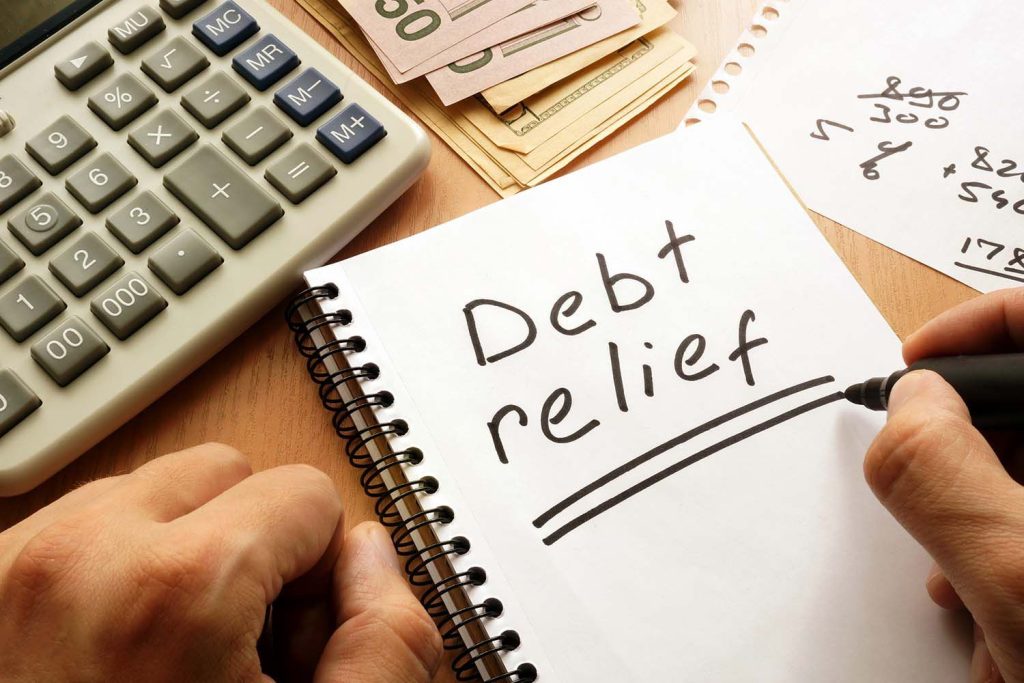-
Table of Contents
- Introduction
- Exploring the Benefits of Consumer Proposals in Canada
- Understanding the Different Types of Consumer Proposals in Canada
- How to Prepare for a Consumer Proposal in Canada
- The Pros and Cons of Consumer Proposals in Canada
- Navigating the Legalities of Consumer Proposals in Canada
- Conclusion
Introduction
Filing Consumer proposals in Canada. A consumer proposal is a legally binding agreement between a debtor and their creditors that allows the debtor to pay off their debt over a period of time. It is a way for individuals to manage their debt and avoid bankruptcy. In Canada, consumer proposals are regulated by the Bankruptcy and Insolvency Act (BIA).
To be eligible for a consumer proposal, an individual must have a total debt of less than $250,000 (excluding a mortgage on their primary residence). The individual must also be insolvent, meaning they are unable to pay their debts as they become due.
The consumer proposal process begins with the debtor filing a proposal with a Licensed Insolvency Trustee (LIT). The LIT will review the proposal and determine if it is fair and reasonable for the creditors. If the proposal is accepted, the creditors will be bound by the terms of the proposal.
The debtor will then make payments to the LIT, who will distribute the payments to the creditors. Once the payments are complete, the debtor’s debts will be considered paid in full and the debtor will be released from their obligations.
It is important to note that filing a consumer proposal will have a negative impact on an individual’s credit rating. However, it is often a better option than bankruptcy, as it allows the debtor to keep their assets and avoid the stigma associated with bankruptcy.
Exploring the Benefits of Consumer Proposals in Canada
Consumer proposals are a viable debt relief option for Canadians who are struggling with unmanageable debt. A consumer proposal is a legally binding agreement between a debtor and their creditors that allows the debtor to pay off their debt over a period of time, usually up to five years. This type of debt relief can provide a number of benefits to those who are struggling with debt.
One of the primary benefits of a consumer proposal is that it can help to reduce the amount of debt that a debtor owes. In a consumer proposal, the debtor and their creditors negotiate a repayment plan that is based on the debtor’s ability to pay. This means that the debtor may be able to pay off their debt for less than the full amount that is owed. This can be a great relief for those who are struggling with debt and are unable to pay the full amount.
Another benefit of a consumer proposal is that it can help to protect the debtor’s assets. When a consumer proposal is accepted, the debtor’s creditors are legally prevented from taking any action to collect the debt. This means that the debtor’s assets, such as their home or car, are protected from being seized by creditors.
Finally, a consumer proposal can help to improve a debtor’s credit rating. Once the consumer proposal is accepted, the debtor’s credit rating will no longer be affected by the debt. This can be a great relief for those who are struggling with debt and are worried about their credit rating.
Overall, consumer proposals can be a great option for those who are struggling with debt and are looking for a way to get out of it. By reducing the amount of debt that is owed, protecting the debtor’s assets, and improving their credit rating, consumer proposals can provide a number of benefits to those who are in need of debt relief.
Understanding the Different Types of Consumer Proposals in Canada
A consumer proposal is a legally binding agreement between a debtor and their creditors. It is an alternative to bankruptcy and is designed to help individuals who are unable to pay their debts in full. In Canada, there are two types of consumer proposals: Division I and Division II.
Division I Proposals
Division I proposals are the most common type of consumer proposal in Canada. They are available to individuals who owe less than $250,000 (excluding the mortgage on their primary residence). In a Division I proposal, the debtor offers to pay a portion of their debt over a period of time, usually up to five years. The debtor must make regular payments to the trustee, who then distributes the funds to the creditors. The creditors must accept the proposal in order for it to be approved.
Division II Proposals
Division II proposals are available to individuals who owe more than $250,000 (excluding the mortgage on their primary residence). In a Division II proposal, the debtor offers to pay a portion of their debt over a period of time, usually up to five years. The debtor must make regular payments to the trustee, who then distributes the funds to the creditors. The creditors must accept the proposal in order for it to be approved.
Unlike Division I proposals, Division II proposals also allow the debtor to negotiate with their creditors to reduce the amount of debt they owe. This can be done by reducing the interest rate, waiving late fees, or reducing the principal amount of the debt. The creditors must agree to the terms of the proposal in order for it to be approved.
Both Division I and Division II proposals offer debtors the opportunity to reduce their debt and avoid bankruptcy. However, it is important to note that consumer proposals are legally binding agreements and must be taken seriously. If the debtor fails to make the required payments, the proposal can be revoked and the debtor may be required to file for bankruptcy.
How to Prepare for Filing Consumer Proposals in Canada
A consumer proposal is a legally binding agreement between you and your creditors that allows you to pay off your debts over a period of time. It is an alternative to bankruptcy and can help you avoid the negative consequences of bankruptcy, such as a damaged credit rating. If you are considering a consumer proposal, it is important to be prepared. Here are some tips to help you prepare for a consumer proposal in Canada.
1. Gather Your Financial Information: Before you can begin the process of filing a consumer proposal, you need to have a clear understanding of your financial situation. Gather all of your financial documents, including bank statements, credit card statements, loan documents, and any other documents related to your debts. This will help you determine how much you owe and to whom.
2. Calculate Your Income and Expenses: Once you have gathered all of your financial documents, you need to calculate your income and expenses. This will help you determine how much you can realistically afford to pay each month.
3. Speak to a Licensed Insolvency Trustee: A Licensed Insolvency Trustee (LIT) is a professional who is licensed by the government to help people with their financial problems. They can provide advice and assistance with filing a consumer proposal. It is important to speak to an LIT before you make any decisions about filing a consumer proposal.
4. Prepare a Budget: Once you have spoken to an LIT, you should prepare a budget. This will help you determine how much money you can realistically afford to pay each month. It is important to be realistic when creating your budget, as it will be used to determine the terms of your consumer proposal.
5. Negotiate with Your Creditors: Once you have prepared a budget, you can begin to negotiate with your creditors. You may be able to negotiate a lower interest rate or a reduced payment amount. It is important to be realistic when negotiating with your creditors, as they will need to agree to the terms of your consumer proposal.
6. File Your Consumer Proposal: Once you have negotiated with your creditors and prepared a budget, you can file your consumer proposal. This will involve submitting a formal document to the court that outlines the terms of your proposal. Once the court has approved your proposal, it will become legally binding.
By following these steps, you can prepare for a consumer proposal in Canada. It is important to be prepared and to understand the process before you make any decisions. A consumer proposal can be a great way to get out of debt, but it is important to be aware of the consequences.
The Pros and Cons of Filing Consumer Proposals in Canada
Consumer proposals are a form of debt relief available to individuals in Canada who are unable to pay their debts in full. A consumer proposal is a legally binding agreement between a debtor and their creditors that allows the debtor to pay back a portion of their debt over a period of time. This type of debt relief can be beneficial for those who are struggling to make payments on their debts, but it is important to understand the pros and cons of consumer proposals before making a decision.
Pros
1. Debt Relief: A consumer proposal can provide debt relief by allowing the debtor to pay back a portion of their debt over a period of time. This can help to reduce the amount of debt owed and make it more manageable.
2. Interest and Fees: Consumer proposals can also reduce or eliminate interest and fees associated with the debt. This can help to reduce the overall amount of debt owed and make it easier to pay off.
3. Creditor Protection: Consumer proposals can also provide protection from creditors. Once the proposal is accepted, creditors are legally obligated to abide by the terms of the agreement and cannot take any further action against the debtor.
Cons
1. Credit Score: A consumer proposal can have a negative impact on a debtor’s credit score. This can make it more difficult to obtain credit in the future.
2. Public Record: Consumer proposals are a matter of public record and can be seen by potential employers, landlords, and other creditors.
3. Cost: Consumer proposals can be expensive and require the debtor to pay a fee to the trustee who is managing the proposal.
In conclusion, consumer proposals can be a beneficial form of debt relief for those who are struggling to make payments on their debts. However, it is important to understand the pros and cons of consumer proposals before making a decision. It is also important to speak with a qualified financial professional to ensure that a consumer proposal is the best option for your particular situation.
Navigating the Legalities of Consumer Proposals in Canada
Navigating the Legalities of Consumer Proposals in Canada
Filing Consumer proposals in Canada is a legal process that can help individuals in Canada who are struggling with debt. A consumer proposal is a legally binding agreement between an individual and their creditors that allows them to pay off their debt over a period of time. It is an alternative to bankruptcy and can be a viable option for those who are unable to pay off their debt in full.
In order to file a consumer proposal, an individual must first meet with a Licensed Insolvency Trustee (LIT). The LIT will review the individual’s financial situation and determine if a consumer proposal is the best option. If it is, the LIT will then prepare the proposal and submit it to the creditors.
Once the creditors have received the proposal, they have 45 days to accept or reject it. If the creditors accept the proposal, the individual will be required to make regular payments to the LIT, who will then distribute the funds to the creditors. If the creditors reject the proposal, the individual may be able to negotiate a new proposal or may need to consider other options, such as bankruptcy.
It is important to note that filing Consumer proposals in Canada are legally binding agreements and must be adhered to. If an individual fails to make payments as outlined in the proposal, the creditors may take legal action. Additionally, consumer proposals will remain on an individual’s credit report for up to three years after the proposal has been completed.
Navigating the legalities of consumer proposals in Canada can be a complex process. It is important to seek the advice of a Licensed Insolvency Trustee to ensure that the process is handled properly and that the individual’s rights are protected.
Conclusion
In conclusion, Filing Consumer proposals in Canada is a viable option for individuals who are struggling with debt and need help managing their finances. It is important to understand the eligibility requirements and the process of filing a consumer proposal in order to make an informed decision. With the help of a Licensed Insolvency Trustee, individuals can take the necessary steps to get their finances back on track and start rebuilding their credit.









